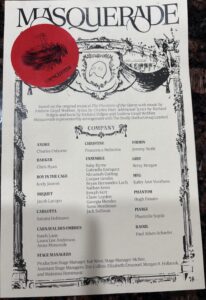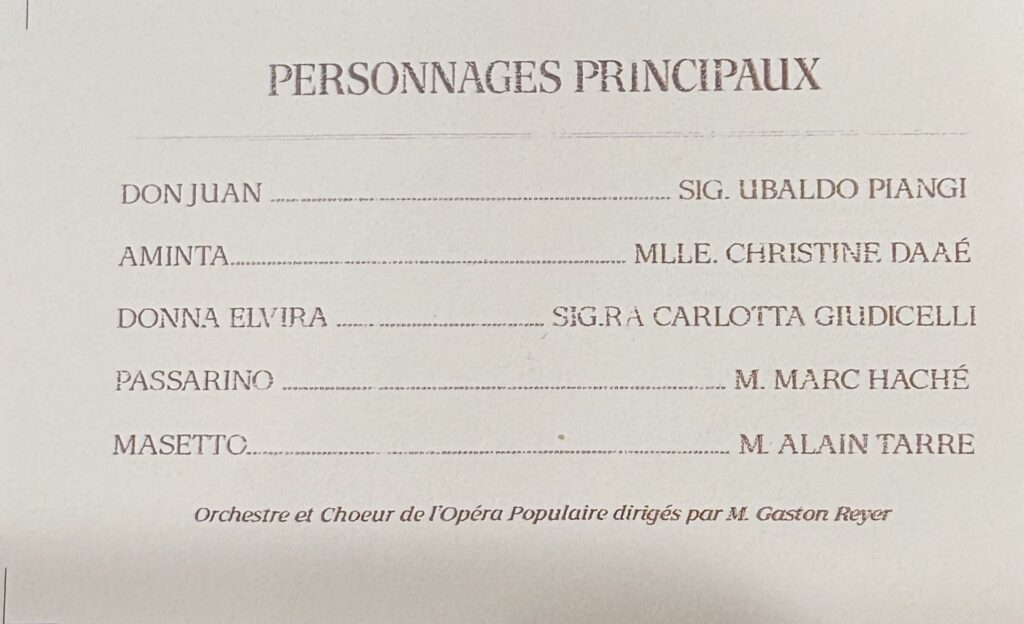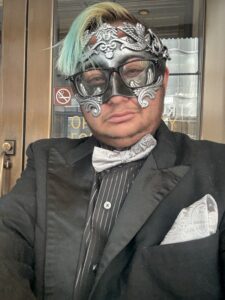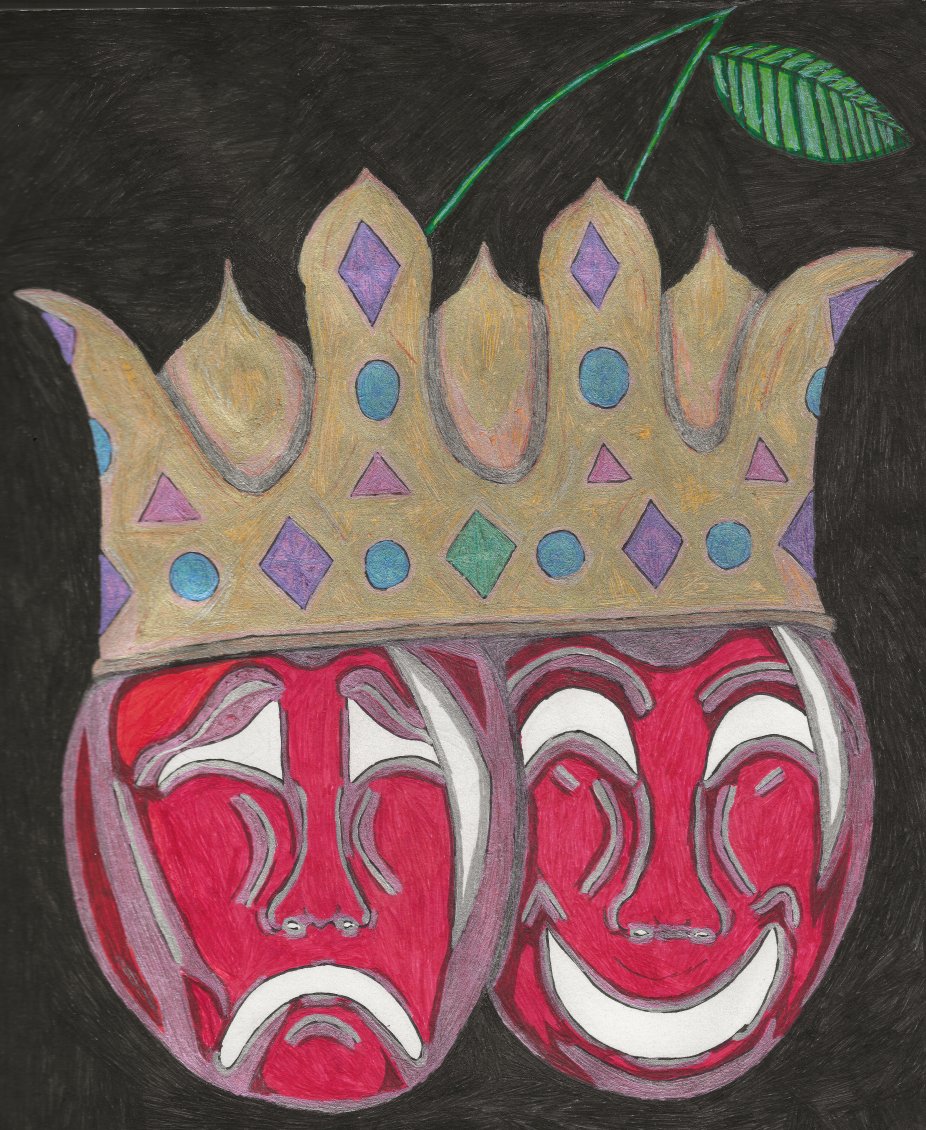Off‐Broadway
31 August 2025
1:30pm Entry Time
I was not initially too keen on seeing this show for two reasons: 1. The ticket price. Theatre is my happy place and I have no qualms with sitting in the last row of a theatre (and therefore paying less) if it means I am able to see more shows. 2. I know the story of The Phantom of the Opera already, so I thought — how much more can they really do with that story?
A lot, apparently.
I am going to do my best to write a cohesive review, however, this show relies heavily on secrecy and I intend to maintain that.
Growing up, when I watched The Phantom of the Opera I would pity the Phantom. He was always a villain, but also mysterious, charming, and a misunderstood soul… and that is just kind of where the original show leaves it. Masquerade however, asks you to do more than to pity the Phantom — it asks you to see yourself in him.

If I had to sum up the theme of this show, I would say it’s about learning to be vulnerable. The show very quickly takes you into a masquerade ball, complete with dancing — but it’s the act of wearing a mask that is truly important. In college, on the very first day of my freshman year acting class — my professor went out of his way to inform us that we all are already actors because we act every single day and our roles vary drastically on our surroundings and even who are the people around us. And truthfully, that lesson hit so hard because my professor was absolutely right. We bite our tongue to be polite around coworkers, bosses, teachers, etc. and then we change into someone else around our best friends and sometimes people don’t take their metaphorical mask off until they are alone, in solitude.
Whether a person is literally wearing a mask or metaphorically wearing one isn’t actually important. There is power in hiding your face or your emotions or even of just blending in with a crowd. But to take that mask off, let your vulnerabilities show, and accepting the judgment that may come with that is what this show is truly about. And it is achieved exquisitely.
The sets are detailed, insanely so. And realistically, it has to be because of how immersive this show is. The number of times that the actors speak directly to you, not the entire audience in the room, but to individual people and make them into (nameless) characters of the show is pretty much constant. Whether Carlotta is addressing the audience in the dressing room of the theatre before the performance of “Don Juan Triumphant” (in which the entire audience are now playing the roles of the chorus members in this fictitious opera), being handed a note that was written by the Phantom, hiding with a character as he attempts to escape from the people who control him, or being inches away from a crashing chandelier — it’s impeccably detailed (right down to one of the notes addressing the Phantom as “Erik” – a detail that is really only found in the novel by Gaston Leroux).


It was also not lost on me how complex this show much be to put on. The entry times were set in 15 minute increments and there are multiple casts performing at once — just all performing different scenes and at different times so that the different groups of audience members never bump into each other. There was actually a technical difficulty that occurred when I was there. And if you happen to be a person who does not fully appreciate how a magic trick is done until you understand the inner workings of it — then a technical difficulty that pauses the show can be a wonderful bit of insight on how the show is able to pull off the magic needed. And it wasn’t until this technical difficulty happened that I was able to fully appreciate how technical and precise everyone in the cast and crew needed to be. Once the performance was set to begin again, the actors will take it from the top of the scene that was interrupted. However, depending on where you are in the theatre at that time, you may still have to wait for the music to catch up to the scene. And it is always fun, I find, to see the actor relax because the show is paused, and then turn right back into the character they were portraying as it starts back up.
The acting in this show cannot be understated. There are of course the characters that you expect to see — Christine, Raoul, The Phantom, Madame Giry, Piangi, and Andre, etc. but there are new characters as well who are used to tell the backstory. The vast majority of the music is from the original score of The Phantom of the Opera, though there are at least two songs that I did not recognise — they fit in perfectly. I also noticed which character sings which line is not always the same as in the famous Andrew Lloyd Webber musical.
Some of actors of note are: Betsy Morgan who portrayed Madame Giry. She is one of the first characters that you get to interact with and she really sets the tone of the entire show. This role — really pretty much every role in this show — requires a good amount of improve because the actors are speaking directly to the individual audience members, asking you to complete tasks or to hide the character or even asking you actual questions. So the actor needs to be able to think quick on their feet and not only respond appropriately to whatever the audience member says or does, but also has to keep the show flowing because if one group is moving too slow, it will mess up all the other groups who have entered after them.
Jacob Lacopo played Joseph Buquet and he was an absolute pleasure to watch perform. Lacopo had one of the most physically demanding roles in the show. It requires a good amount of acrobatics and this actor made it look flawless. This was especially impressive because it was during his big scene that the technical error occurred and the show had to be paused. This meant that the audience was able to see him exit, out of character, and then reenter, get into character, and perform as if nothing had happened. It was simply beautiful.
Carlotta was played by Satomi Hofmann and honestly, Carlotta is probably my least favourite character in the show. And I have seen many productions where Carlotta is of course a massive diva, but not always an amazing singer. Satomi Hofmann is an amazing singer. And she’s funny. I imagine it must be fun to play this role because part of her character is to be rude to the people who have come to see Masquerade because in character, we aren’t there to see Masquerade, we are there to be her chorus members backing her up on stage. This role is also very heavy on needing to be able to improve because she asks an audience member to do a specific task. If that audience member does not understand the cue, she has fix that without interrupting the flow of the show.
Christine was played by Francesca Mehrotra. I was so impressed with this performer. The character of Christine often has to say a lot with her facial expressions and body language — she must be able to look conflicted, confused, full of wonder, pity, anger, love — and that is often achieved when the character is not signing. Mehrotra has an absolutely beautiful voice, but what struck me was her ability to have such subtle emotional changes without saying a word.
Raoul was portrayed by Paul Adam Schaefer who gave an immaculate performance. I appreciated his take on the character of Raoul who felt much more gritty in this show than I have ever seen him before. I often felt that Raoul feels decently passive, perhaps even confused, for large chunks of The Phantom of the Opera, but not in Masquerade. In Masquerade, Raoul makes his purpose and intent much more pronounced and this was wonderful to see.
The Phantom was portrayed by Hugh Panaro. What a joy it was to watch him perform and see him really delve into this character. As I mentioned above, this show is intimate, with the actors sometimes grabbing your hand or placing things/taking things out of your hands. The Phantom has to be able to do these types of actions very quickly, subtly at times, and is therefore reliant on the audience members being in the correct place at the correct time and doing the correct action. He has to be a villain, but also one that the audience does not detest. In fact, if you leave this show only pitying the Phantom, I fear you may have missed the point. You have to sympathise with the Phantom. Panaro has the difficult job making the audience see themselves in his character — a character who lets not forget, kills people. Panaro is, of course, an excellent singer (anyone playing the Phantom has to be), but more than that, just like with the character of Christine, the Phantom has to be able to change his facial expressions and body language in the blink of an eye and it must be done subtly since the audience is so close.
The only real downside of this show is since the show is constantly moving, the action never stops. Which means, if you’re in the back of your group, you may miss the beginning of the action in the next scene. Also, I fear this likely effects anyone who has to use the accessibility options more than anyone else because instead of walking through the building, at a relatively quick pace — anyone using the accessibility options have to wait for the elevator, which I fear takes extra time and almost insures they will miss some of the performance.
All in all, if you’ve ever dreamt of the Phantom of the Opera grabbing your hand and whisking you through the tunnels underneath the opera house — then this show is for you. If you have ever wanted to experience a show instead of watching a show — this is for you. And it is well worth the ticket price.

